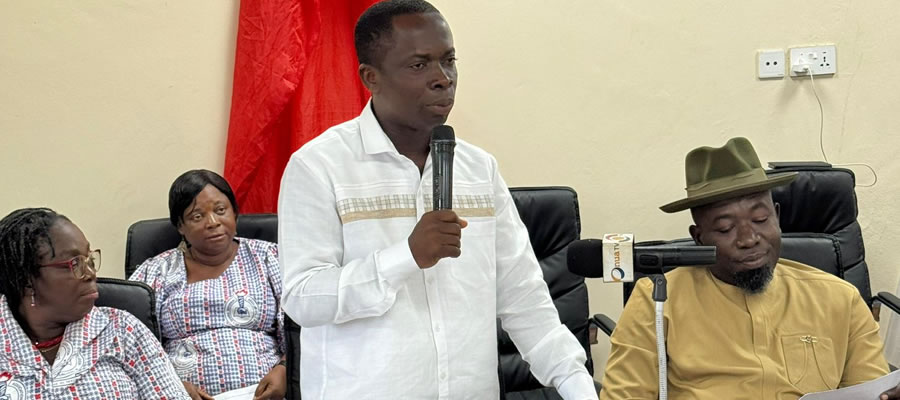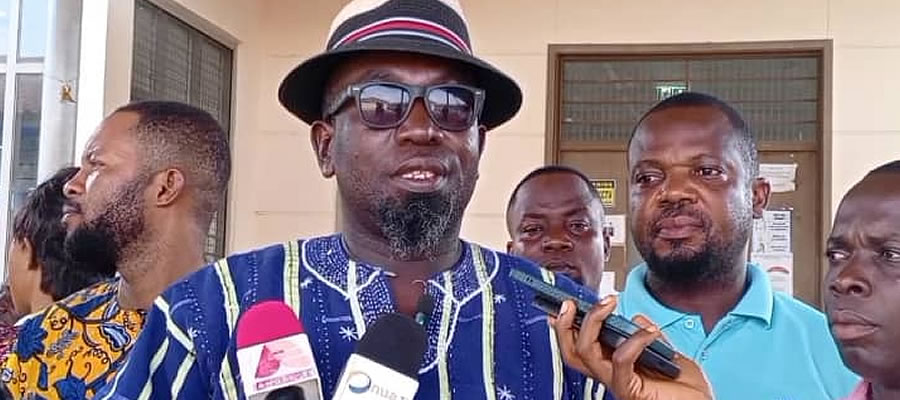

The District recognizes the right of every child to education, as enshrined in the 1992 constitution and the inherent benefits of education. Consequently, education has been identified as a sector for prioritization. Hence, such policies and programmes as the Free Compulsory Universal Basic Education (FCUBE), the Capitation Grant, School Feeding Programme and the Free School Uniforms to needy school children have been introduced and running in the district. These are to address a variety of challenges and inadequacies within the educational system in the new district.There are 57 public basic schools in the district distributed across the 5 circuits in the district.
All the schools are single stream with the exception of Twifo Hemang R/C Basic A&B, Wawase R/C Primary A&B schools. This implies that in general the basic school heads in the district have relatively small number of pupils and teachers to manage and this could promote effective management of schools.The priority given to the educational sector is intended to address the numerous challenges facing education in the new district. These include low enrolment, inadequate professional teaching staff and poor infrastructure, among others.There are a total of 250 KG, Primary and JHS schools made up of 147 and 103 public and private schools respectively in the district and spread across the 5 circuits – Hemang East, Hemang West, Wawase, Jukwa North and Jukwa South.
Educational Facilities and Enrollment
Enrolment
The total pupil enrolment in the district at the basic level is 32,020 distributed as: Hemang East Circuit 4,380, Hemang West Circuit 4,759, Wawase Circuit 5,268, Jukwa North Circuit 3,855 and Jukwa South Circuit 2,829 as indicated by the table ……. Pupils are not evenly distributed to schools. Accordingly, there is much pressure on teachers and facilities of schools with high enrolment especially in the public schools like Hemang R/C Basic A&B, Hemang Presby Basic, Baakondzidzi D/A Basic, Hemang Methodist Basic, Ankaako R/C Basic, Wawase R/C KG/Primary A&B, Gyankobo D/A Basic, Bremang Catholic Basic and Jukwa Methodist Basic schools. Thus, there is the need to post many teachers to these schools in order to ease the pressure or volume of work on teachers. There is also the need to regularly renovate the facilities of schools for continued teaching and learning.
Gender Parity Index (GPI)
Gender Parity Index (G.P.I) measures the relative access to education by both male and females at any level of education. The district has total KG enrolment of 4,940 made up of 2,521 boys representing 51% and 2,419 girls representing 49% with a GPI of 0.95. At the primary level enrolment is 11,717 consisting of 6,078 boys (51.8%) and 5,639 girls (49.2%) with a GPI of 0.92. Furthermore, enrolment at the JHS level is 4,434 with boys consisting 2,382 (53.7%) and 2,052 (46.7%) girls with a GPI of 0.86.
Statistics ndicates that at all the levels (KG, Primary and JHS) boys enrolments are higher than those of girls and with a GPI of 0.92. This is viewed against the background that females out number males in the district, female education at the basic level should be consciously promoted to address this imbalance in the educational sector. Hence, interventions aimed at encouraging enrolment of females should be pursued to expand the potential opportunities of education.
Educational Infrastructure
About 21 (representing 36.8%) of the 57 public schools in the district have infrastructure deficits at various levels. Likewise, the infrastructure in the private schools leaves much to be desired. These deficits are either classrooms under trees or dilapidated classrooms. These challenges negatively affect teaching and learning in the schools. They also have the potential to reduce pupil enrolment and in some instances like Hemang Presby Basic, the situation poses risk to the health and safety of pupils and teachers.
Pupil/Teacher Ratio
The quality of the teaching staff significantly affects the quality and performance of school children at all levels of education. The essence of diagnosing staffing conditions is to provide basis for a re-organization and redistribution of supply. There is a total of 14,369 pupils at the public basic level and a teacher population of 629 giving a pupil/teacher ratio of 23:1 for 2014/2015. This shows a substantive improvement over the previous years’ ratios. The District recorded pupil/Teacher ratios of 40:1 2009/2010), 36:1 (2011/2012) 38:1 (2012/2013).
The improvement seen in the 2014/2015 ratio is due to an increase in the teacher population rather than a decrease in pupil enrolment. In spite of the improved ratio certain individual schools may have poor pupil/teacher ratio. For example Hemang R/C Basic A&B has a ratio of 48:1, Hemang Methodist has 34:1 while Asem Asa Anglican Primary has a ratio of 9:1. This gives a picture of unfair distribution of teachers in the district. There is therefore the need for the District Education Directorate to consider seriously redistribution to teachers.
Teacher Population
The total number of teachers in public basic schools as at 2014 was 629 (394 males and 235 females) out of which 433 representing 68.8% are trained whilst 196 remained untrained. This situation does not augur well for promotion of quality teaching and learning especially when untrained teachers are more than trained teachers at the KG level where sound foundation in education is extremely important. This could be one on the causes of poor performance of pupils at the basic level. There should be programmes to train all the untrained teachers to enhance their performance.
Date Created : 11/21/2017 8:19:02 AM









 facebook
facebook
 twitter
twitter
 Youtube
Youtube
 +233 593 831 280
+233 593 831 280 0800 430 430
0800 430 430 GPS: GE-231-4383
GPS: GE-231-4383 info@ghanadistricts.com
info@ghanadistricts.com Box GP1044, Accra, Ghana
Box GP1044, Accra, Ghana